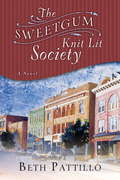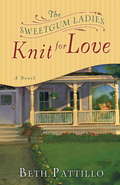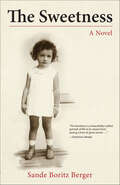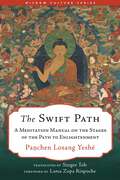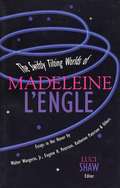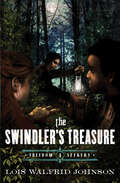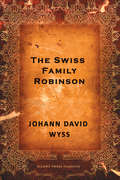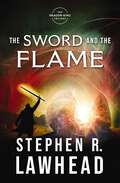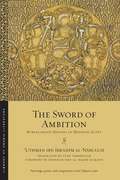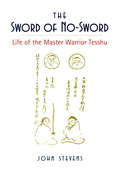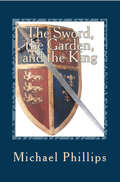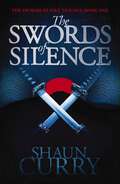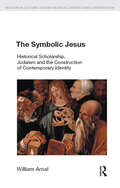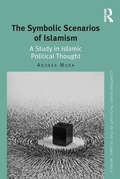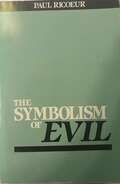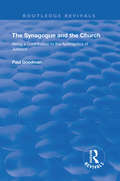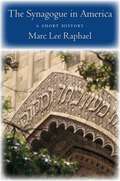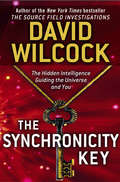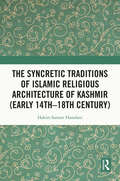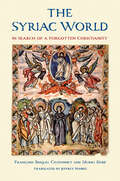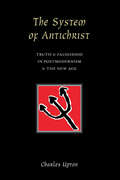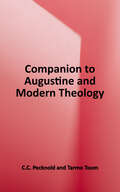- Table View
- List View
The Sweetgum Knit Lit Society
by Beth PattilloSometimes life has to unravel before you can knit it together...On the third Friday of each month, Eugenie, Ruth, Esther, Merry, and Camille meet at the Sweetgum Christian Church to enjoy the two things that connect them: a love of knitting and a passion for books. Their camaraderie remains unthreatened until Eugenie, the town librarian, introduces an angry teenager into their midst. Eugenie also gives them a new reading list: the classic novels of girlhood that young Hannah has never read. Little Women. Pollyanna. Heidi. Books that remind the women of the hopes and dreams they have lost along the way. With each click of their needles, the ladies of the Knit Lit Society unravel their secrets: A shadow from Eugenie's past haunts the controlled order of her life. Merry's perfect little family is growing again-but will she continue to feel her identity slip away? Camille dreams of leaving town but is bound by ties of love. And the sisters, Ruth and Esther, must confront a lie they have lived with for over thirty years.As Hannah is reluctantly stitched into their lives, the women discover the possibility that even in sleepy Sweetgum, Tennessee, they can still be the heroines of their own stories.From the Trade Paperback edition.
The Sweetgum Ladies Knit for Love
by Beth Pattillo"[Pattillo] creates a sweet story of redemption that will go down well with knitters as well as the knitting-challenged." -- PUBLISHERS WEEKLY"The Sweetgum Knit Lit Society cries for a sequel." -- BOOKPAGEOnce a month, the six women of the Sweetgum Knit Lit Society gather to discuss books and share their knitting projects. Inspired by her recently-wedded bliss, group leader Eugenie chooses "Great Love Stories in Literature" as the theme for the year's reading list-a risky selection for a group whose members span the spectrum of age and relationship status.As the Knit Lit ladies read and discus classic romances like Romeo and Juliet, Wuthering Heights, and Pride and Prejudice, each member is confronted with her own perception about love. Camille's unexpected reunion with an old crush forces her to confront conflicting desires. Newly widowed Esther finds her role in Sweetgum changing and is surprised by two unlikely friends. Hannah isn't sure she's ready for the trials of first love. Newcomer Maria finds her life turned upside-down by increasing family obligations and a handsome, arrogant lawyer, and Eugenie and Merry are both asked to make sacrifices for their husbands that challenge their principles.Even in a sleepy, southern town like Sweetgum, Tennesee, love isn't easy. The Knit Lit ladies learn they can find strength and guidance in the novels they read, the love of their family, their community-and especially in each other.Beth Pattillo learned to knit in the second grade. She is the author of the book, Heavens to Betsy, the recipient of the Romance Writers of America Best Inspirational Romance Novel in 2006, and its sequel, Earth to Betsy. Beth lives with her husband and children in Tennessee.
The Sweetness: A Novel
by Sande Boritz BergerA Foreward Reviews Indie Fab 2014 Finalist for Book of the Year A. L. A. Sophie Brody Award 2014 nominee Early in The Sweetness, an inquisitive young girl asks her grandmother why she is carrying nothing but a jug of sliced lemons and water when they are forced by the Germans to evacuate their ghetto. "Something sour to remind me of the sweetness," she tells her, setting the theme for what they must remember to survive. Set during World War II, the novel is the parallel tale of two Jewish girls, cousins, living on separate continents, whose strikingly different lives ultimately converge. Brooklyn-born Mira Kane is the eighteen-year-old daughter of a well-to-do manufacturer of women’s knitwear in New York. Her cousin, eight-year-old Rosha Kaninsky, is the lone survivor of a family in Vilna exterminated by the invading Nazis. But unbeknownst to her American relatives, Rosha did not perish. Desperate to save his only child during a round-up of their ghetto, her father thrusts her into the arms of a Polish Catholic candle maker, who then hides her in a root cellar─putting her own family at risk. The headstrong and talented Mira, who dreams of escaping Brooklyn for a career as a fashion designer, finds her ambitions abruptly thwarted when, traumatized at the fate of his European relatives, her father becomes intent on safeguarding his loved ones from threats of a brutal world, and all the family must challenge his unuttered but injurious survivor guilt. Though the American Kanes endure the experience of the Jews who got out, they reveal how even in the safety of our lives, we are profoundly affected by the dire circumstances of others.
The Swift Path: A Meditation Manual on the Stages of the Path to Enlightenment
by Panchen Losang YeshéThis collection of guided meditations from eighteenth-century Tibet harnesses elements of tantric visualization to induce realizations while contemplating the steps on the path to buddhahood.The Swift Path by the Second Panchen Lama has long been heralded in the Geluk school of Tibetan Buddhism as one of the &“eight great lamrims,&” or works presenting the stages of the path to enlightenment, but it is the last to become widely available in English translation. Composed by a preceptor of two Dalai Lamas, this practical and systematic guide to meditating on the lamrim is based on the Easy Path, a more concise work by the First Panchen Lama. In The Swift Path, Panchen Losang Yeshé expands on the earlier Panchen Lama&’s meditation guide with more detailed instructions on how to generate a clear and profound experience of the key recognitions that allow us to advance on our spiritual journey. These include the recognition of the opportunity afforded by our human existence, both its preciousness and its precariousness, and the way to adopt and live out the practices of a bodhisattva. The guided meditations here make use of a visualization of one&’s teacher in the guise of Sakyamuni Buddha to unlock our own innate potential for buddhahood, complete enlightenment, to best benefit humanity and all living beings.
The Swiftly Tilting Worlds of Madeleine L'Engle
by Luci ShawIn honor of Madeleine L'Engle's 80th birthday, a host of prominent writers and academics gather to create this unique collection. Madeleine's circle of friends and peers (writers, poets, scholars, theologians) here provide an intimate portrait of L'Engle and respond to her writings and mentoring influence.Ranging from the personal to the academic, these essays illuminate the many worlds of Madeleine's writings: the private, the reflective, the theological, the scientific, the mythic, and the literary.From the Trade Paperback edition.
The Swindler's Treasure (Freedom Seekers #4)
by Lois Walfrid JohnsonSometimes there's a cost for doing the right thing," says Captain Norstad after standing up to a swindler. But the cost is high-the possible loss of the Christina. Will he and the other Freedom Seekers recover the stolen money before a double payment is due? When Libby's Newfoundland dog Samson saves a deaf child from being run over by a horse and buggy, Peter becomes part of the Christina family. Then a different theft threatens Jordan's reputation. The money entrusted by his church to help fugitive slaves cross into Canada is gone! And will Jordan find his father before they're lost to each other forever? As the Christina steams south, Caleb learns that Micah Parker has escaped toward the Mississippi River. Who will find Micah first-Jordan or the slave catchers? Leaving the Christina at Alton, Libby, Caleb, Jordan, and Peter take up the dangerous search and receive the help of the Underground Railroad in Illinois. What does it mean to Caleb to hear what his hero, newspaper editor Elijah Lovejoy, believed about freedom of the press? How did people in the Underground Railroad live their belief that when man's law and God's law conflict, God's law is higher, more important? The law to be followed. In The Swindler's Treasure, the fourth Freedom Seekers novel, Lois Walfrid Johnson brings into the story the thoughts of historic Illinois residents who give their reasons for being active participants in the Underground Railroad. The Freedom Seekers series is a six-novel middle-reader set in 1857. Feel the rush of immigrants to the new land, and the dangers of the Underground Railroad in these true-to-life Riverboat stories. The characters will receive a heart-warming response from readers of all ages. Adult readers will ask themselves, "Would I have been one of those who helped runaway slaves?" Lois Walfrid Johnson uses strong historical research, great writing, and wonderful storytelling to bring alive a critical time in American history.
The Swindler's Treasure (Freedom Seekers #4)
by Lois Walfrid JohnsonCaptain Norstad stood up to a swindler, but now he might lose the riverboat they all love.&“Sometimes there&’s a cost for doing the right thing,&” Captain Norstad stated. Will he and the other Freedom Seekers recover the stolen money before a double payment is due? When the Freedom Seekers learn that Micah Parker has escaped and is running for the Mississippi River, they leave the Christina and take up the search. They request the help of the Underground Railroad, but will they find Micah before the slave catchers? When God&’s law and man&’s law conflict, which will they choose to follow? From the golden age of steamboats, the rush of immigrants to new lands, and the dangers of the Underground Railroad come true-to-life stories of courage, integrity, and suspense in the Freedom Seekers series.
The Swindler's Treasure (Freedom Seekers #4)
by Lois Walfrid JohnsonCaptain Norstad stood up to a swindler, but now he might lose the riverboat they all love.&“Sometimes there&’s a cost for doing the right thing,&” Captain Norstad stated. Will he and the other Freedom Seekers recover the stolen money before a double payment is due? When the Freedom Seekers learn that Micah Parker has escaped and is running for the Mississippi River, they leave the Christina and take up the search. They request the help of the Underground Railroad, but will they find Micah before the slave catchers? When God&’s law and man&’s law conflict, which will they choose to follow? From the golden age of steamboats, the rush of immigrants to new lands, and the dangers of the Underground Railroad come true-to-life stories of courage, integrity, and suspense in the Freedom Seekers series.
The Swiss Family Robinson: Or, Adventures Of A Father And Mother And Four Sons In A Desert Island ... To Which Are Added, Notes Of Reference
by Johann David WyssShipwrecked after a great storm, a Swiss family makes their home on a deserted island.With supplies and livestock salvaged from their wrecked ship, the family creates an idyllic settlement and builds a rewarding life while they await rescue.Be it mystery, romance, drama, comedy, politics, or history, great literature stands the test of time. ClassicJoe proudly brings literary classics to today's digital readers, connecting those who love to read with authors whose work continues to get people talking. Look for other fiction and non-fiction classics from ClassicJoe.
The Sword and the Flame: In The Hall Of The Dragon King, The Warlords Of Nin, And The Sword And The Flame (The Dragon King Trilogy #3)
by Stephen LawheadSometimes the greatest evil lies within. When Prince Gerin, King Quentin's son, is kidnapped, the kingdom is thrown into chaos and Quentin is forced to search inward for faith and hope. But is faith enough? At the dawn of a new era, where religious unrest is rampant and uncertainty of the kingdom&’s future threatens everyone, it takes courage to stand.From an orphaned servant to a war hero, respected leader, and a fierce man of faith, Quentin has slowly transformed into The Dragon King. But even the powerful can fall prey to weakness.?The world is turned upside-down when the dark sorcerer Nimrood--long thought dead after a battle with the previous Dragon King--returns with a fearsome plan.? Shattered by the death of a dear and trusted friend, the abduction of his beloved son, and the loss of his enchanted sword, Quentin finds his faith tested like never before.At the dawn of a new era, where faith clashes and old evils rear their heads, Quentin and his friends must lead the way despite their own flaws and uncertainty. With the fate of the world hanging on by a thread, their decisions slice through religious unrest and restore hope in what is to come.In The Sword and The Flame readers will find:Christian allegory and themesA sweeping Arthurian styled epic fantasy about hope, destiny, and faithCrossover appeal for young adult and adult readersIn?The Sword and the Flame, the final volume of Stephen R. Lawhead's captivating Dragon King Trilogy, the fate of the entire world depends on the outcome of this climactic battle between good and evil.
The Sword of Ambition: Bureaucratic Rivalry in Medieval Egypt (Library of Arabic Literature #52)
by ʿUthmān ibn al-NābulusīPatronage, power, and competition in the Sultan’s courtThe Sword of Ambition opens a new window onto interreligious rivalry among elites in medieval Egypt. Written by the unemployed bureaucrat 'Uthman ibn Ibrahim al-Nabulusi, it contains a wealth of little-known historical anecdotes, unusual religious opinions, obscure and witty poetry, and humorous cultural satire. Leaving no rhetorical stone unturned, al-Nabulusi pours his deep knowledge of history, law, and literature into the work—addressed to the Ayyubid sultan—as he argues against the employment of Coptic and Jewish officials. Written at a time when much of the inter-communal animosity of the era was conditioned by fierce competition for scarce resources that were increasingly controlled by an ideologically committed Sunni Muslim state, The Sword of Ambition reminds us that “religious” conflict must always be considered in its broader historical perspective.An English-only edition.
The Sword of No-Sword: Life of the Master Warrior Tesshu
by John StevensMaster swordsman, calligrapher, and Zen practitioner, Yamoaka Tesshu is a seminal figure in martial arts history. John Stevens's biography is a fascinating, detailed account of Tesshu's remarkable life. From Tesshu's superhuman feats of endurance and keen perception in life-threatening situations, to his skillful handling of military affairs during the politically volatile era of early nineteenth-century Japan, Stevens recounts the stories that have made Tesshu a legend. This is the book all martial artists must own.
The Sword, the Garden, and the King
by Michael PhillipsIn this Christian fantasy novel for children of all ages, a young boy embarks on a perilous adventure to save the creatures of a magical forest.When fourteen-year-old Matthew Robinson enters the Forest of Pellanor, he and his brother and sister have no idea what’s in store for them. All of Pellanor has been waiting for them to rescue its creatures from a danger that threatens the forest families and the life they have known. But to defeat the evil deceiver Argon, Matthew must first master his courage—and his faith.Noted devotional author Michael Phillips delivers a delightfully engaging Christian allegory in the tradition of George MacDonald and C.S. Lewis.
The Swords of Silence: Book 1: The Swords of Fire Trilogy (The Swords of Fire Trilogy #1)
by Shaun Curry'AN INTELLIGENTLY PRESENTED HISTORICAL FANTASY THAT PROVOKES THOUGHT FROM THE START' THE BRITISH FANTASY SOCIETYWhere once new ideas and beliefs were accepted, now the country's military dictator, the Shogun is shutting his country down to any outside influences.Father Joaquim Martinez who left Portugal to make Hizen Province, Japan his home, has been quietly tending to the lives of his villagers, but everything is about to be thrown into turmoil, as the Shogun has outlawed Martinez's beliefs. Those who won't recant or accept banishment, face a death sentence.With the threat of a massacre looming, and the Shogun's Samurai closing in, Father Martinez must decide, if he is willing to risk everything, to save those he has sworn to protect.
The Symbolic Jesus: Historical Scholarship, Judaism and the Construction of Contemporary Identity (Religion in Culture)
by William E. ArnalIt is widely accepted that Jesus was a Jew. However, both Christian and New Testament scholarship have a strong anti-Jewish history. 'The Symbolic Jesus' presents the controversies surrounding the Jewishness of Jesus. It examines the insistence among historical Jesus scholars that Jesus was a Jew and the ways this frames the figure of Jesus in ancient Christian literature. The book examines the anti-Jewish legacy of the past and more recent approaches to biblical scholarship. Contemporary identity issues - scholarly, political, religious and cultural - are shown to lie at the heart of the debate.
The Symbolic Scenarios of Islamism: A Study in Islamic Political Thought (Contemporary Thought in the Islamic World)
by Andrea MuraThe Symbolic Scenarios of Islamism initiates a dialogue between the discourse of three of the most discussed figures in the history of the Sunni Islamic movement—Hasan al-Banna, Sayyid Qutb, and Osama bin Laden—and contemporary debates across religion and political theory, providing a crucial foundation upon which to situate current developments in world politics. Redressing the inefficiency of the terms in which the debate on Islam and Islamism is generally conducted, the book examines the role played by tradition, modernity, and transmodernity as major "symbolic scenarios" of Islamist discourses, highlighting the internal complexity and dynamism of Islamism. By uncovering forms of knowledge that have hitherto gone unnoticed or have been marginalised by traditional and dominant approaches to politics, accounting for central political ideas in non-Western sources and in the Global South, the book provides a unique contribution towards rethinking the nature of citizenship, antagonism, space, and frontiers required today. While offering valuable reading for scholars of Islamic studies, religious studies and politics, it provides a critical perspective for academics with an interest in discourse theory, post-colonial theory, political philosophy, and comparative political thought.
The Symbolism of Evil
by Paul Ricoeur"According to Ricoeur, the most primal and spontaneous symbols of evil are defilement, sin and guilt ... Ricoeur moves from the elementary symbols of evil into the rich world of myths ... and he ends by suggesting that the clue to the relation between philosophy to mythology is to be found in the aphorism 'The symbol gives rise to the thought' ... Ricoeur's method and argument are too intricate and rich to assess in so short a review. Suffice it to say that this is the most massive accomplisment of any philosopher within the ambience of Christian faith since the appearance of Gabriel Marcel" – Sam Keen, The Christian Century
The Synagogue and the Church: BEING A CONTRIBUTION TO THE APOLOGETICS OF JUDAISM (Routledge Revivals)
by Paul GoodmanPublished in 1908, this book details the development and establishment of Judaism and Jewish culture in contrast to the spread and presence of the Christian church and community. Focusing on the spiritual importance of Jewish scripture and its prominence in other Abrahamic religions, Goodman presents a discussion on spiritual and ethical perspectives in Judaism in comparison to Christianity.
The Synagogue in America: A Short History
by Marc Lee Raphael&“An insightful, scholarly, and comprehensive overview of the evolution and changing role of the American synagogue" (Choice). In 1789, when George Washington was elected the first president of the United States, laymen from all six of the new nation&’s Jewish congregations sent him congratulatory letters. He replied to all six—thus recognizing these religious institutions as part of the new nation. By this time, the synagogue had become the focal point of American Jewish life, a dominance that was not challenged until the twentieth century, when institutions such as Jewish community centers or Jewish philanthropic organizations claimed to be the hearts of their Jewish communities. Concise yet comprehensive, The Synagogue in America is the first history of this all-important institution, illuminating its changing role within the American Jewish community over the course of three centuries. From Atlanta and Des Moines to Los Angeles and New Orleans, Marc Lee Raphael examines Orthodox, Reform, Conservative, and Reconstructionist synagogues. He traces the emergence of the American synagogue from the colonial period to its modern proliferation and diversification. Encompassing architecture, forms of worship, rabbinic life, fundraising, creative liturgies, and feminism, The Synagogue in America is the go-to history for understanding the synagogue&’s significance in American Jewish life.
The Synchronicity Key: The Hidden Intelligence Guiding the Universe and You
by David WilcockIn The Hidden Science of Lost Civilisations David Wilcock exposed some of the greatest scientific secrets of our time to unlock the mysteries man-kind have always struggled to answer: who are we, how did we get here and where are we going? In The Synchronicity Key David Wilcock goes beyond this new understanding to investigate how our universe works. Using history and astrology, as well as new scientific research, Wilcock demonstrates there is a hidden architecture within time which guides individuals and nations through a system of enlightenment.
The Syncretic Traditions of Islamic Religious Architecture of Kashmir (Early 14th –18th Century)
by Hakim Sameer HamdaniThis book traces the historical identity of Kashmir within the context of Islamic religious architecture between early fourteenth and mid-eighteenth century. It presents a framework of syncretism within which the understanding of this architectural tradition acquires new dimensions and possibilities in the region. In a first, the volume provides a detailed overview of the origin and development of Islamic sacred architecture while contextualizing it within the history of Islam in Kashmir. Covering the entirety of Muslim rule in the region, the book throws light on Islamic religious architecture introduced with the establishment of the Muslim Sultanate in the early fourteenth century, and focuses on both monumental and vernacular architecture. It examines the establishment of new styles in architecture, including ideas, materials and crafts introduced by non-Kashmiri missionaries in the late-fourteenth to fifteenth century. Further, it discusses how the Mughals viewed Kashmir and embellished the land with their architectural undertakings, coupled with encounters between Kashmir’s native culture, with its identity and influences introduced by Sufis arriving from the medieval Persianate world. The book also highlights the transition of the traditional architecture to a pan-Islamic image in the post-Independence period. With its rich illustrations, photographs and drawings, this book will interest students, researchers, and professionals in architecture studies, cultural and heritage studies, visual and art history, religion, Islamic studies and South Asian studies. It will also be useful to professional architecture institutes, public libraries, museums, cultural and heritage bodies as well as the general reader interested in the architectural and cultural history of South Asia.
The Syriac World: In Search of a Forgotten Christianity
by Francoise Briquel Chatonnet Muriel DebieA comprehensive survey of Syriac Christianity over three thousand years Syriac is often referred to as the third main language of Christianity, along with Latin and Greek, and it remains a foundational classical, literary, and religious language throughout the world. Originating in Mesopotamia along the Roman and Parthian frontiers, it was never the language of a powerful state or ethnic group, but with the coming of Christianity it developed into a rich religious and cultural tradition. At the same time that Christianity was making its way through Europe, Syriac missionaries were founding churches from the Mediterranean coast to Persia, converting the Turkic tribes of Central Asia, and building communities in India and China. This comprehensive work tells the underexplored story of the Syriac world over three thousand years, from its pre-Christian roots in the Aramaic tribes and the ancient Near East to its vibrant expressions in modern diaspora churches. Enhanced with images, songs, poems, and important primary texts, this book shows the importance of Syriac history, theology, and literature in the twenty-first century.
The System Of Antichrist: Truth and Falsehood in Postmodernism and the New Age
by Charles UptonThe System of Antichrist examines the present religious and cultural scene from the standpoint of traditional metaphysics and critiques the New Age spiritualities within their postmodern context. Its many references to Rene Guenon and Frithjof Schuon also help introduce these important but little-known 'traditionalist' thinkers. The book presents lore relating to the 'latter days' of the present cycle from the vantage point of comparative religion, drawing upon relevant doctrines from Buddhism, Hinduism, Judaism, Christianity, Islam, Zoroastrianism, and the Native American traditions. It also speculates upon the social, psychic, and spiritual nature of that being known to Christianity, Judaism, and Islam as the Antichrist, presenting him as both an individual and a system and warning those willing to be warned against the spiritual seduction and terror he represents, and against the regime which will be--and is--the social expression of that seduction and that terror. Finally, in tracing the roots of Antichrist in the fallen nature of man, the author sketches the particular quality of spirituality proper to apocalyptic times, the dangers it faces, the unique opportunities open to it. And along the way he describes his own course from the 'spiritual revolution' of the 1960s, through the world of New Age spiritualities, to the threshold of traditional esoterism and metaphysics. As he says, speaking of the angst that characterizes the modern world: The specific medicine for the shock of despair is the deeper shock of meaning. Nothing but the weight of eternity, breaking through the thin, brittle shell of the postmodern sky, can set us on our feet.
The Sāṃkhya System: Accounting for the Real (SUNY series in Hindu Studies)
by Christopher Key ChappleThe Sāṃkhya System brings new life to an ancient Hindu system of thought. Sāṃkhya spans the fields of philosophy, physics, metaphysics, psychology, and ethics. Although notably not theological, its key premises can be found in virtually all religious traditions that originate from India. Sāṃkhya espouses a reciprocity between Prakṛti, the realm of activity, and Puruṣa, the silent witness. It also delineates the phenomenal experiences that arise from Prakṛti, including the operations of the human body, the five great elements, and the eight mental states. Sāṃkhya proclaims that knowledge of world and self can lead to freedom.This book presents a new translation of Īśvarakṛṣṇa's Sāṃkhya Kārikā, with grammatical analysis. It includes interpretive essays that explore the philosophical aspects of the Sāṃkhya system by Geoffrey Ashton, Ana Funes Maderey, Mikel Burley, Christopher Key Chapple, and Srivatsa Ramaswami, as well as its sociological and psychological applications as delineated by Marzenna Jakubczak, McKim Marriott, and Alfred Collins.
The T&T Clark Companion to Augustine and Modern Theology (Bloomsbury Companions Ser.)
by Tarmo Toom C. C. PecknoldThis book is both a theological companion to the study of Augustine, and a resource for thinking about Augustine's importance in modern theology. Each of the essays brings Augustinian depth to a broad range of contemporary theological concerns. <p><p>The volume unveils cutting-edge Augustinian scholarship for a new generation and at the same time enables readers to see the timely significance of Augustine for today. Each of the essays not only introduces readers to key themes in the Augustinian corpus but also provides readers with fresh interpretations that are fully conversant with the theological problems facing the church in our world today. <p><p>Designed as both a guide for students and a reference point for scholars, it will seek both to outline the frameworks of key Augustinian debates while at all times pushing forward fresh interpretative strategies concerning his thought.
